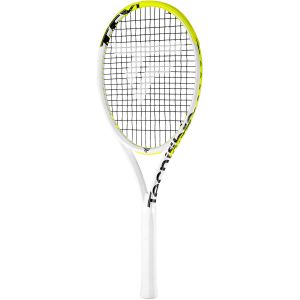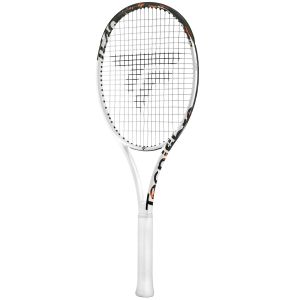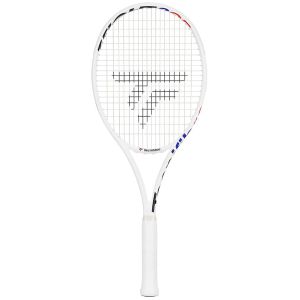By logging in you:
-
Buy at cheaper prices
-
Get discount coupons
- You don't have to fill in your name, address etc. (at any future orders)
- You may track your order online at any time
Tecnifibre T-Fight 315 Iso Tennis Racket
SKU: 14FI315S5

The T-FIGHT 315S racquet is upping its game to keep pace with modern play. It is shaped by the “RS Section” unique frame ergonomics, which strike the ideal compromise between power and control by combining the best of the classic “square” and “round” sections. The frame is more manoeuvrable, with a more central weight distribution to release acceleration of the racquet head. It is also equipped with Isoflex technology, providing varying stiffness all around the frame to increase the sweetspot area and enhance forgiveness and stability on impact.
The T-FIGHT range is used on the Tour by top players Daniil Medvedev and Iga Swiatek, as well as most of the Tecnifibre Team, including Alexander Bublik and Tallon Griekspoor. Lots of players with very different styles of play use T-FIGHT, proof of its versatility.
The mission of the Tecnifibre brand is to unleash the potential of every player by offering products that combine high performance and unique elegance, all developed in the TECNILAB laboratory using the logic: Identify, Quantify, Solve.
The game of tennis is being played ever faster both on the Tour and in clubs alike. The average first serve speed on the Tour has increased from 168km/h in the early 2000s to 190km/h in 2020, and the number of aces has shot up. Professional players’ racquets have also developed to adapt to these changing dynamics.
We have measured these changes by conducting a generational analysis of the racquets of active professional players. And the results are noteworthy indeed. First, racquets have become ever more lightweight: Next Generation players are using frames that are 18 g lighter on average than older players’ racquets. The swingweight is also going down, with a 20-point difference between these two generations.
To sum up, the game is progressing towards racquets offering ever greater manoeuvrability as players have less time to react and need to swing their racquet through faster, to generate power. That’s why the swing speed is key in modern tennis!
As such, we’ve designed the new T-Fight racquet with a crucial challenge in mind - to create a more manoeuvrable racquet which retains its hallmark: perfect balance between power and control. On the one hand, the weight has been redistributed to reduce the swingweight and facilitate acceleration of the racquet head. And on the other, the frame ergonomics with the RS section have been strengthened to increase the power level.
Leveraging this in-depth research, the new T-FIGHT 315S is more powerful and manoeuvrable than ever, becoming the ultimate racquet for the modern tennis player.
- The perfect balance between power and control
- For top-level competitive players
- The heaviest in the range
- For more power and stability
- Stylish look and high performance
- Used on the Tour
| Player's level | Experts (men), Experts (women), Advanced (men) |
|---|---|
| Head size (sq.in) | 98 sq.in |
| String pattern | 16 X 19 |
| Weight (gr) | 315 gr |
| Width | 22.5mm |
| Stiffness | 65 |
| Length | 685mm (27") |
| Balance (cm) | 31 cm |
| Swingweight | 325 |
| Composition | Graphite |
| Cover | Not included |
| Stringing | Unstrung |

 Български
Български
















